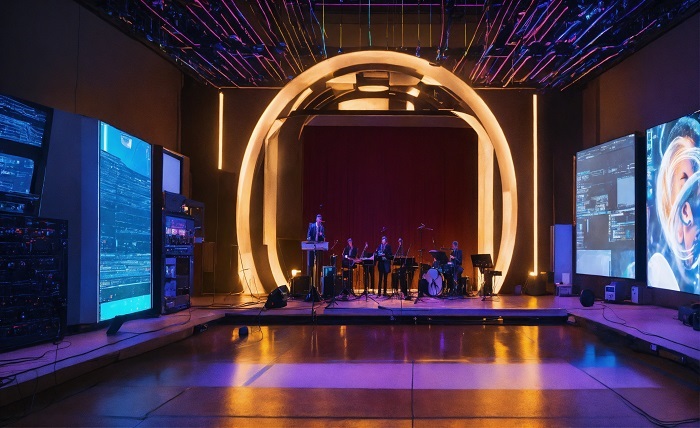Streaming Chronicles: Journey into Virtual Realms

In the ever-evolving landscape of entertainment, the advent of streaming platforms has revolutionized the way we consume media. From movies to TV shows, documentaries to live events, streaming services have become the go-to destination for millions worldwide. However, one of the most intriguing developments within this realm is the rise of virtual reality (VR) streaming, offering users a gateway into immersive, interactive experiences like never before. In this article, we embark on a journey into the virtual realms of streaming, exploring the technology, its impact on entertainment, and the future it promises.
The Rise of Virtual Reality Streaming
Virtual reality, once a futuristic concept confined to sci-fi novels and films, has swiftly become a tangible reality in the digital age. With advancements in hardware and software, VR technology has transcended the confines of gaming and entered the realm of streaming media. The ability to transport users to entirely new worlds, whether fictional or real, has captured the imagination of content creators and consumers alike.
Streaming platforms have recognized the potential of VR as a medium for storytelling and engagement. Companies like Oculus, owned by Facebook (now Meta), and HTC have developed VR headsets capable of delivering high-quality immersive experiences. These headsets, coupled with powerful computers or standalone devices, allow users to enter virtual environments and interact with content in ways previously unimaginable.
Exploring Virtual Realms
One of the most compelling aspects of VR streaming is its ability to transport users to distant places and experiences without leaving their homes. Imagine attending a live concert, standing amidst the cheering crowd as your favorite band takes the stage, all from the comfort of your living room. Or diving into the depths of the ocean to explore coral reefs and encounter marine life up close. With VR streaming, these experiences are not just possible but incredibly immersive.
Another exciting frontier of VR streaming is interactive storytelling. Unlike traditional media where viewers are passive observers, VR allows users to become active participants in the narrative. Whether solving puzzles in a mystery thriller or making choices that shape the outcome of a story, the possibilities for interactive storytelling in virtual reality are endless. This level of engagement creates a deeper connection between the audience and the content, enhancing the overall experience.
Challenges and Opportunities
While virtual reality streaming holds immense promise, it also presents its fair share of challenges. Chief among these is the need for compelling content tailored specifically for VR platforms. Unlike traditional film or television, VR requires a different approach to storytelling and production techniques. Content creators must adapt to the unique characteristics of VR, such as spatial audio and 360-degree environments, to create truly immersive experiences.
Moreover, the cost of entry for VR technology remains a barrier for many consumers. High-quality VR headsets and compatible hardware can be expensive, limiting the accessibility of VR streaming to a relatively niche audience. However, as technology advances and prices decline, we can expect VR to become more accessible to a broader demographic, driving further adoption and innovation in the streaming industry.
Despite these challenges, the opportunities presented by VR streaming are vast. From virtual concerts and events to educational experiences and virtual tourism, the potential applications of VR technology are limited only by our imagination. As content creators continue to experiment with new ideas and technologies, we can expect to see VR streaming evolve into a mainstream form of entertainment in the years to come.
The Future of VR Streaming
Looking ahead, the future of VR streaming appears incredibly promising. As technology continues to improve, we can expect VR headsets to become lighter, more comfortable, and more affordable, making them accessible to a wider audience. Additionally, advancements in software development will enable more sophisticated and lifelike virtual experiences, blurring the line between the physical and digital worlds.
Furthermore, the integration of augmented reality (AR) and mixed reality (MR) technologies into VR headsets will open up new possibilities for interactive content and social experiences. Imagine playing a multiplayer game with friends who appear as lifelike avatars in your virtual environment or collaborating on a project with colleagues from around the world in a shared virtual workspace. The convergence of VR, AR, and MR will usher in a new era of interconnectedness and immersion, revolutionizing not only entertainment but also communication, education, and beyond.
Conclusion
VR streaming represents a thrilling frontier in the world of entertainment. By combining the power of technology with the art of storytelling, VR offers users a gateway into virtual realms limited only by our imagination. While challenges remain, the potential for VR to transform the way we consume media and experience the world is undeniable. As we continue to push the boundaries of what’s possible in virtual reality, one thing is certain: the journey into virtual realms has only just begun.




